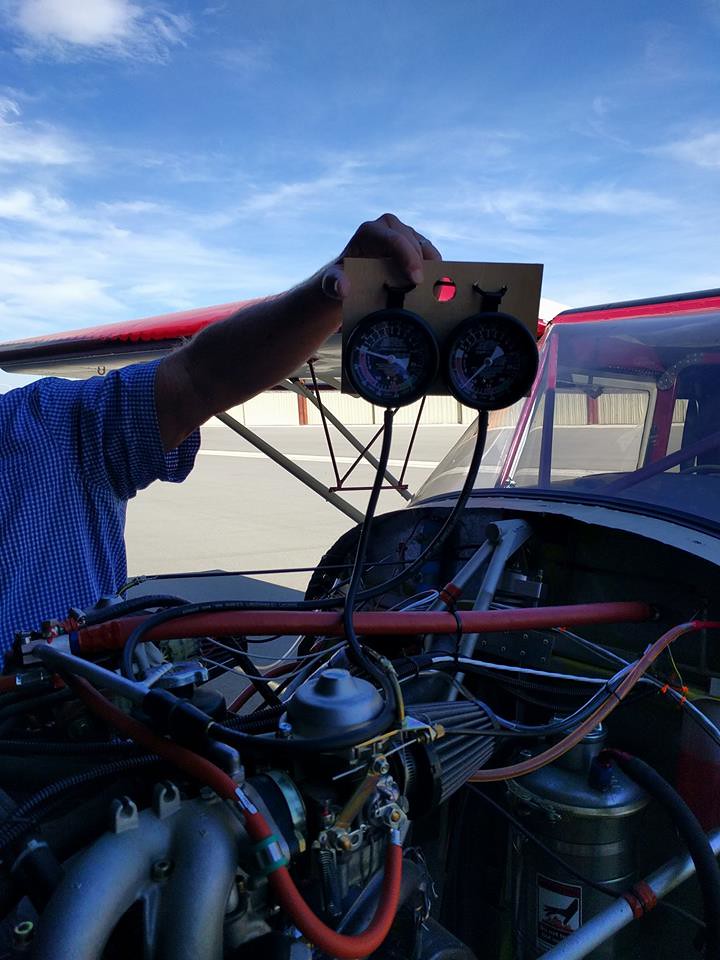I had taken a couple of days off to kickstart the flying but as we now know no flying was to be had until the vibrations and the leaks were taken care of. Scott was willing to come join me so early in the morning I was at the hangar with him and Allen.
The first thing to do was a “mechanical synchronisation”. This was essentially making an eyeball sync between the two throttle cables. We removed the cables from the actuator and then set the idle stop per the instructions, redid the cables and kept messing with them until they hit the stops at idle, ran smoothly when the throttle was pushed, and ran together at the same rate. We got it pretty good and then moved on to the pneumatic synchronisation.
For the pneumatic sync, you need a couple of vacuum gauges, some hose and some fittings all of which are available in a handy kit from our good friends at Aircraft Spruce. Unfortunately one of my gauges came showing 20 instead of 0 but rather than send it back and have to wait another week or more, we just subtracted 20 from any value that it read.
You disconnect the tube that runs between the carbs and hook up the plastic tubes so that one is reading from each carburetor. Here’s Scott holding up our gauges.
The idea then is to measure the output at each outlet at near idle and see if they are the same. If not, tweak the adjustment screw in the “right direction” on the “appropriate” carb until they are the same. On the first run ours were about 10 (I have no idea what units we were measuring in) apart but we really had no clue which one to adjust or in which direction. After some discussion we adjust the passenger side in the direction we thought and the next test run was 15. So we backed that change out, going a little further, and as luck would have it, the values were pretty much the same. The needles move around a lot so you have to take an overall look at where they both are.
This whole time, fuel was coming out of the pilot side float valve venting tube. The other side was no longer venting. So Scott decided we needed to fix that before going any further lest it catch fire so he took the float bowl off and had a look. I’m not entirely sure what he did but the next run that we did there was no fuel overflowing.
I ran the engine up to a higher speed and the gauges were still looking good so we disconnected them and put everything back together. I restarted the engine and there was no vibration at idle or at higher speeds, nor were there any leaks. Success!!
